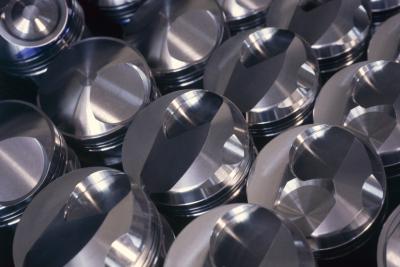
Cylinder boring is one way to increase an engine's displacement, allowing more air and fuel to enter the cylinders during each combustion cycle. The biggest benefit is that with increased air and fuel comes increased power. Additionally, boring and honing the cylinder walls will grind away any scrapes and imperfections that have developed in the cylinders over time due to inadequate lubrication and other internal stresses.
To generate power, internal combustion engines compress and ignite a mixture of air and fuel in a four-stroke process. In the first stroke, air and fuel are drawn into the cylinders through the intake system. The pistons then compress the air-fuel mixture before it is ignited by the spark plugs. The energy released from the combustion applies downward force to the pistons, which is stored in the crankshaft as rotational force, or torque. Increasing the amount of air and fuel in the cylinders leads to higher power output.
The displacement of an engine is the volume of air drawn into the cylinders during one complete combustion cycle. To determine an engine's displacement, both the cylinder bore and stroke must be considered. Bore is the diameter of the cylinder, while stroke is the vertical distance the piston travels during the combustion process. Since boring the cylinders increases their diameter, more air is drawn into the engine during the intake stroke. Similarly, increasing the stroke means the pistons will travel further down the cylinder during the intake process, thus drawing more air in before the pistons enter the compression stroke.
Both overbore and stroker kits raise the power potential of an engine, but with different effects. Since increasing the stroke makes the pistons travel a greater distance during each combustion cycle, piston speeds are increased relative to engine rpm. This increases the stress on internal components and generally requires lowering the maximum rpm limit. For this reason, increasing the stroke is most efficient when tuned for low- and mid-range power gains. In contrast, boring the cylinders increases displacement while allowing piston speeds to remain the same. Overbore kits are more appropriate for high-revving applications in which increased power is needed in the upper rpm range.
In addition to the increase in power offered by boring the cylinders, there are also some downsides. Boring requires grinding the internal cylinders to increase their diameter. With less material in the cylinder walls, overheating issues can occur due to excessive heat transfer. And with thinner cylinder walls, the engine block will be more prone to cracking, warping and other damage caused by internal heat and pressure. Extreme issues such as broken pistons or rods are therefore more likely to puncture the engine block, causing total engine failure.